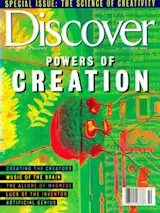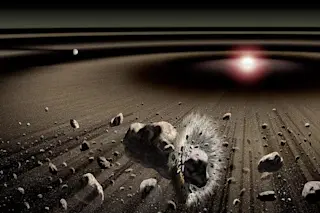Jupiter has an enormous magnetic field--ten times as powerful as Earth’s. To account for it, astronomers have speculated that tremendous pressure at the giant planet’s core squeezes hydrogen there into a metal, and like all metals, this hydrogen could conduct electricity and generate a magnetic field. The only problem with this theory is that until recently, there was no proof that hydrogen could exist in this guise. No one had ever observed metallic hydrogen anywhere--not even in the lab, let alone on Jupiter.
Hydrogen isn’t a very likely candidate for a metal--it remains a nonconducting gas under all but the most exotic conditions. Previous attempts to create metallic hydrogen involved crushing a sample of supercold, solid hydrogen with a vise-like diamond anvil. The theory was that under high pressure, hydrogen atoms would be squeezed together so closely that their electrons, like those in normal metals such as copper or iron, ...














